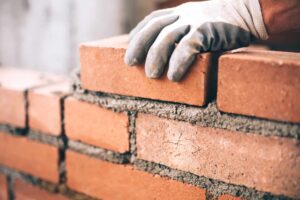Deck Builders Summerville SC have a high level of craftsmanship and can precisely help you envision your deck vision. They are also adept problem solvers and will quickly address any concerns during the project.
Additionally, ask if they have insurance that covers construction errors and damages. This will give you peace of mind if something goes wrong with your deck.

When searching for a deck builder, asking about their experience is important. A licensed contractor who’s been in business for years will have more knowledge and a better understanding of the building process than an unlicensed one. This means fewer mistakes and a faster project completion time. It would be best to ask for testimonials and examples of previous work. Lastly, check out the contractor’s website for customer reviews.
Some contractors make promises during the interview process that seem too good to be true and may need help to deliver on those commitments. This can lead to miscommunications, delays in the construction process, and a disappointing outcome. It’s best to hire a contractor who can provide a realistic timeline for the project and discuss what will happen if something goes wrong.
Before hiring a deck builder, you should look for online reviews and referrals from friends and family members. This way, you can avoid scams and choose a trustworthy company with a track record of excellent customer service. You should also visit local home improvement stores and ask staff about who they would recommend for a backyard deck. Finding a reliable deck builder with the right skills and tools is important to complete the job properly.
In addition to a high level of expertise, deck builders should have excellent communication skills and a strong work ethic. They should also be well-versed in your city’s building codes and regulations. If a deck builder can’t follow these guidelines, they may be fined during construction or even after completion.
Deck-building games are a strategy genre that allows players to construct unique decks. They often feature a race to either earn points or destroy an enemy, and they can be very intense and exciting. It took video games a while to grasp this idea, but some of today’s most popular games have deck-building mechanics. The popularity of these types of games has exploded since Dominion’s 2008 release. They’re very popular among casual gamers and people who like playing with friends.
When choosing a deck builder, finding one that is licensed is important. A license will show that the company has met the minimum standards for building decks in your area. It will also give you peace of mind, knowing that the contractor is insured to cover any repairs if something goes wrong on the job site. Hiring a licensed deck builder with workers’ compensation insurance is also a good idea, as this will protect you in an accident or injury.
If a deck builder is not licensed, you should avoid working with them at all costs. An unlicensed deck builder may need to follow the proper codes and regulations, which can cause major problems. For example, you must get a permit for your deck to be eligible for homeowner’s insurance or home equity loans. In addition, an unlicensed deck builder may need to be properly insured, which can lead to costly lawsuits if someone is injured on the job.
Most cities require permits for all decks over 30 inches above the ground or house foundation. This ensures the structure is strong enough and safe for anyone who steps onto it. In addition to a building permit, you must submit two copies of the construction plans for your deck. These plans should include an overhead deck view, including footings, joists, rails, and stairs. You will also need to submit a site plan, which should be drawn to scale and indicate how far the deck is from property lines and any setbacks.
A well-permitted deck is a valuable investment that will increase your home’s value. In addition, it will help prevent any legal disputes in the future. If you are still determining whether your project requires a permit, contact the city’s building department to learn more about the requirements. It would be best to ask your deck builder to provide a copy of their license and insurance certificate. Scan these documents and back them up digitally, as you might need them.
Whether you’re building a deck or installing a fence, there are certain insurance policies that every deck builder should have. The right policy will help cover your property in case of damage or accidents, as well as any legal fees. Depending on your specific business, you should get a smaller policy for your small company or a more comprehensive one for a larger firm with more employees.
General liability insurance for deck contractors is necessary to reduce the risk of financial losses if an individual’s physical injury or property damage claims are brought against your firm. It also protects from accusations of defamation or slander.
Another type of coverage that you should consider is workers’ compensation insurance. Deck builders need to have this as it covers their employees’ medical expenses, lost wages, and more in the event of an accident while on the job. Most states require employers to have this type of insurance.
In addition to having the appropriate types of insurance, a good deck contractor should have a solid contract that sets out the project’s goals and expectations. This will ensure a clear understanding of what is expected from each party and serve as proof of the agreement if necessary.
Finally, decking contractors should have a business license and be registered as a legal entity. The most common choices are limited liability companies (LLCs) and corporations. An attorney can help you choose the best option for your business and set it up correctly.
It’s also important for deck contractors to plan to deal with any unexpected construction delays. These may include weather, permitting, and equipment failures. Some deck builders have a backup plan to minimize the impact of these delays on their customers, while others may offer a refund or discount. Ask your deck builder about this and find out if they can accommodate any changes in your timeline.
A deck is a big investment, and finding the right contractor for the job is important. You should hire a qualified professional with experience and insurance. This ensures you will be protected if something goes wrong during construction. It’s also good to ask the contractor to provide a written contract or agreement before work begins. This will help you hold them accountable if they fail to follow promises or make mistakes, leading to additional costs.
The cost of building a new deck can vary significantly depending on the size, materials, and design. For example, more complex designs with built-in accessories and stairs are usually more expensive than simple, freestanding decks. Additionally, the use of certain materials can also increase labor costs. For example, tropical hardwoods and composite decking are typically more expensive than pressure-treated wood.
In addition to the initial cost of building a deck, homeowners should factor in the maintenance price and any additional features they want to add. For example, adding a hot tub or an outdoor kitchen can increase the total cost by up to 20%. Finally, homeowners should consider property taxes. The resale value of a deck may raise property taxes, so it’s important to check with the local tax collector for details.
Despite their many benefits, decks can be expensive to build. Depending on the size and materials, a patio can cost up to $25,000. For this reason, it’s important to budget carefully and compare quotes from different contractors before hiring a contractor.
A well-designed and maintained deck can add value to your home and improve its appearance. A deck can be great for entertaining guests, relaxing in the sun, and soaking up fresh air. Fortunately, there are several ways to reduce the cost of a new deck.
First, you should save on construction costs by choosing a simpler design. This can cut down on materials and labor costs. Another way to save money is by selecting a less expensive type of construction, such as a post and beam or cantilever.

